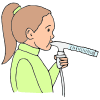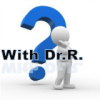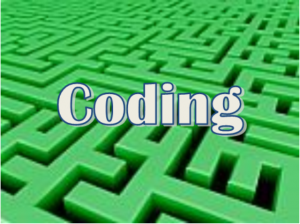Coding for multiple nebulizer treatments is one of our “dual rule” issues where Medicare and other carriers who follow Medicare guidelines, differ from the AMA’s CPT™ instructions.
 As of CPT 2016, CPT code 94640 describes treatment of acute airway obstruction with inhaled medication and/or the use of an inhalation treatment to induce sputum for diagnostic purposes. The language change was to clarify the intent that this be a “bundled code” representing both the diagnostic and therapeutic services. It does NOT however bundle multiple units.
As of CPT 2016, CPT code 94640 describes treatment of acute airway obstruction with inhaled medication and/or the use of an inhalation treatment to induce sputum for diagnostic purposes. The language change was to clarify the intent that this be a “bundled code” representing both the diagnostic and therapeutic services. It does NOT however bundle multiple units.
According to the CPT™, when a patient receives multiple aerosol treatments on the same date, you should use 94640 for the first treatment and repeating subsequent treatments with the same code as a separate line item and adding require modifier 76 (Repeat procedure by same physician).
Therefore, you would code the example of two consecutive nebulizer treatments as:
- 94640–first treatment
- 94640-76 x 1 subsequent treatment.
For the inhalation solution, you should report two units of J7613 (Albuterol, inhalation solution, administered through DME, unit dose, 1 mg). Because J7613 represents one -unit dose.
A standard treatment session takes about 10 minutes and the patient should see some relief within 15 minutes. We understand from our physicians that one additional application is fairly common in the clinical setting especially in Urgent Care settings.
If a patient receives “back-to-back” nebulizer treatments exceeding 1 hour, (which rarely occurs in urgent care), you would bill CPT code 94644, “Continuous inhalation treatment with aerosol medication for acute airway obstruction; first hour,” and, if applicable, CPT code 94645, “Continuous inhalation treatment with aerosol medication for acute airway obstruction; each additional hour”, instead of CPT code 94640.
While CMS agrees with the rationale that code 94640 represents both the diagnostic and therapeutic services, they also ignore the AMA guidance and bundle multiple units.
Medicare: NCCI Policy Manual -2018; Chapter 11, J8. Page 26. CPT code 94640 (pressurized or non-pressurized inhalation treatment for acute airway obstruction…) describes either treatment of acute airway obstruction with inhaled medication or the use of an inhalation treatment to induce sputum for diagnostic purposes.
CPT code 94640 shall only be reported once during an episode of care regardless of the number of separate inhalation treatments that are administered. (Under Medicare regulations, an episode of care begins when a patient arrives at a facility for treatment and terminates when the patient leaves the facility.)
If CPT code 94640 is used for treatment of acute airway obstruction, spirometry measurements before and/or after the treatment(s) shall not be reported separately. The inhaled medication may be reported separately however, depending on the payer’s rules, the medication may also be bundled to the service.
The medications administered in the urgent care setting are most commonly a form of albuterol. You will find the correct codes to use in the “Healthcare Common Procedure Coding System Level II” (HCPCS) coding manual. Below is a list of Federal Drug Administration (FDA)-approved medication containing albuterol:
- J7611, “Albuterol, inhalation solution, FDA-approved final product, non-compounded, administered through DME, concentrated form, 1 mg”
- J7612, “Levalbuterol, inhalation solution, FDA-approved final product, non-compounded, administered through DEM, concentrated form, 0.5 mg”
- J7613, “Albuterol, inhalation solution, FDA-approved final product, non-compounded, administered through DME, unit dose, 1 mg”
- J7614, “Levalbuterol, inhalation solution, FDA-approved final product, non-compounded, administered through DME, unit dose, 0.5 mg”
- J7620, “Albuterol, up to 2.5 mg and ipratropium bromide, up to 0.5 mg, FDA-approved final product, non-compounded, administered through DME”
There are several respiratory or pulmonary conditions that typically qualify for inhalation treatment coding, such as:
- Asthma, (J45.-)
- Acute bronchitis, (J20-)
- Chronic obstructive pulmonary disease (COPD), (J44-)
- Pneumonia, (J18.-)
- Acute bronchospasm, (J98.01)
- Cough, (R.05)
- Wheezing, (R06.2)
- Shortness of breath, (R06.02)
In summary, mark this code as having one unit billing for Medicare but multiple sessions to most major medical carriers. Remember to “justify” an additional session in your notes by showing incomplete relief from the first dose after a reasonable expected response time (ie 15-20 min).
 After decades of monitoring the annual Medicare therapy caps and temporary exceptions fiascos, I got an early morning call from a Washington DC friend contact that Congress had finally “repealed” the cap on therapy services.
After decades of monitoring the annual Medicare therapy caps and temporary exceptions fiascos, I got an early morning call from a Washington DC friend contact that Congress had finally “repealed” the cap on therapy services. The regulations on treating immediate relatives are found in the Medicare Benefits Policy Manual, Pub 100-02 in Chapter 16 (General Exclusions From Coverage) Section 130. To better understand these regulations, you must first be familiar with the definitions of “provider and supplier” as used in all Medicare regulations.
The regulations on treating immediate relatives are found in the Medicare Benefits Policy Manual, Pub 100-02 in Chapter 16 (General Exclusions From Coverage) Section 130. To better understand these regulations, you must first be familiar with the definitions of “provider and supplier” as used in all Medicare regulations.
 Coding Alert for P-Stim™ AGAIN!
Coding Alert for P-Stim™ AGAIN!